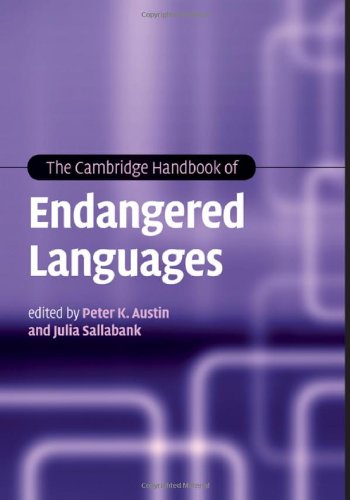Machine generated contents note: 1. Introduction Peter K. Austin and Julia Sallabank; Part I. Endangered Languages: 2. Language ecology and endangerment Lenore Grenoble; 3. Speakers and communities Colette Grinevald and Michel Bert; 4. Survey of endangered language situations around the world David Bradley; 5. Language contact and change in endangered languages Carmel O'Shannessy; 6. Structural aspects of language endangerment Naomi Palosaari and Lyle Campbell; 7. Language and culture Lev Michael; 8. Language and society Bernard Spolsky; Part II. Language Documentation: 9. Language documentation Tony Woodbury; 10. Speakers and language documentation Lise Dobrin and Josh Berson; 11. Data and language documentation Jeff Good; 12. Archiving and language documentation Lisa Conathan; 13. Digital archiving David Nathan; Part III. Responses: 14. Language policy for endangered languages Julia Sallabank; 15. Revitalisation of endangered languages Leanne Hinton; 16. Orthography development Friederike Lüpke; 17. Lexicography in endangered language communities Ulrike Mosel; 18. Language curriculum design and evaluation for endangered languages Serafin Coronel-Molina and Teresa McCarty; 19. The role of information technology in supporting minority and endangered languages Gary Holton; Part IV. Challenges: 20. Endangered languages and economic development Wayne Harbert; 21. Researcher training and capacity development in language documentation Anthony Jukes; 22. New roles for endangered languages Máire;ad Moriarty; 23. Planning a language documentation project Claire Bowern.
The Cambridge handbook of endangered languages. ISBN 9780521882156. Published by Cambridge University Press in 2011. Publication and catalogue information, links to buy online and reader comments.
